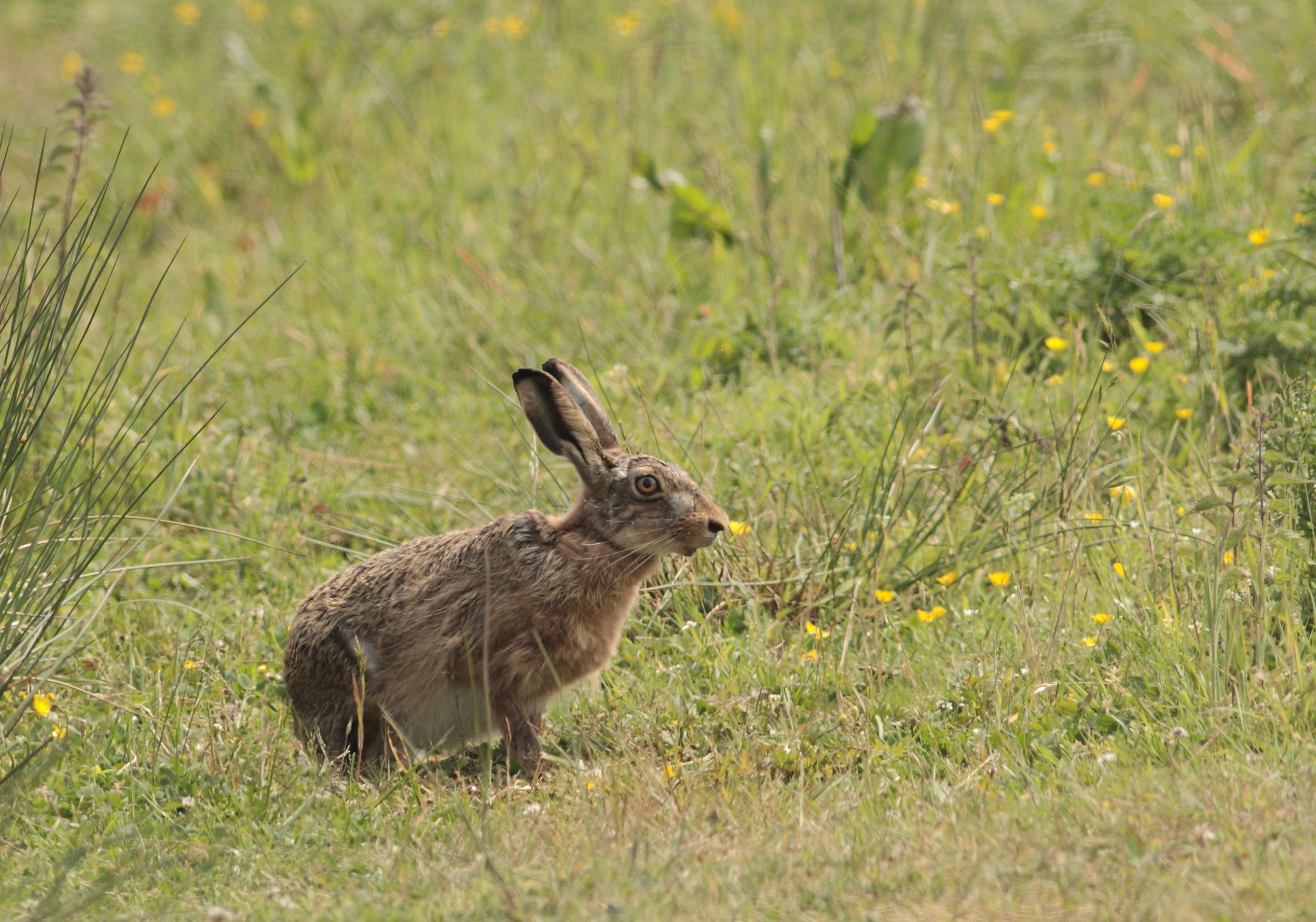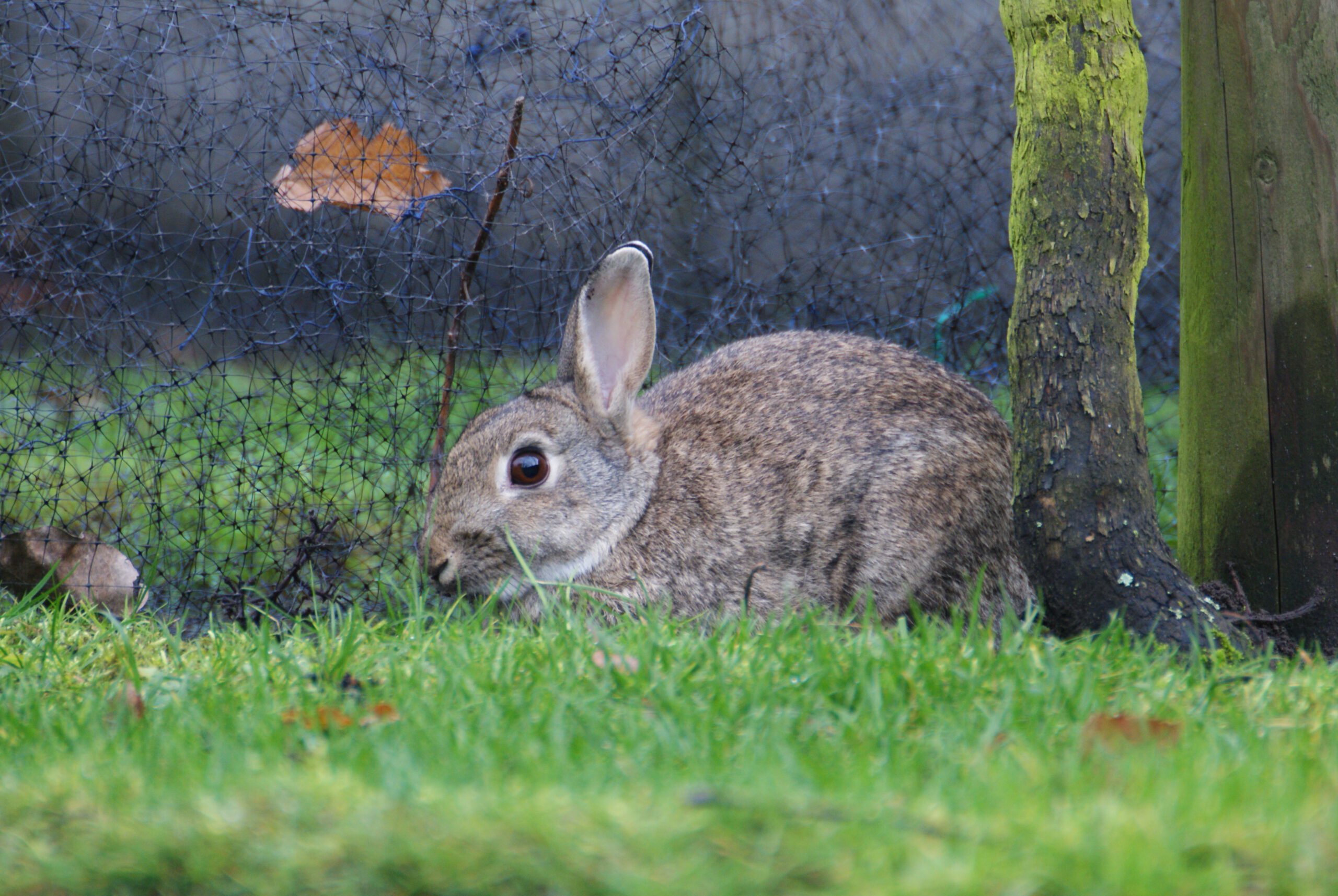In need of a body designed to flee
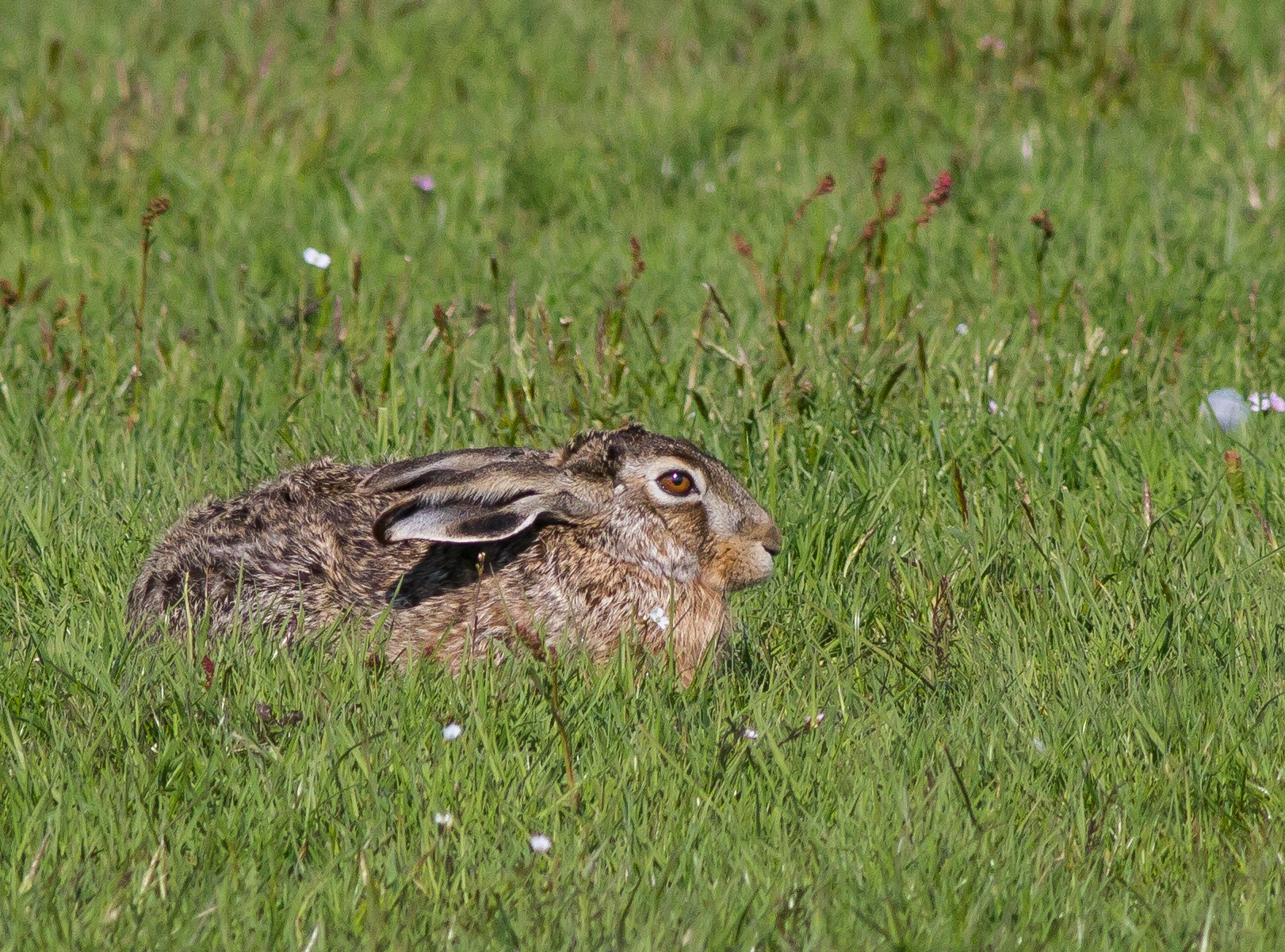
Well-hidden
One of the typical larger mammals found in European grasslands is the European hare (hare hereafter), which occurs in different types of grassland habitats ranging from Mediterranean to continental climates. They are also found around forest edges and in rural areas, where they graze herbs, grasses and crops.
Hares are naturally shy and stay unnoticed when they hide during daytime, snuggled into shallow burrows under plant cover, so called ‘forms’. Green monocultures offer less variety in food and offer less camouflage for their brown fur, which might be reasons for the species to decline in large parts of its range.
In early spring, the males in particular fight over the right to mate by charging and chasing each other, sometimes standing on their hind legs whilst hitting each other with the front legs, as if fighting a tough boxing match.
Power & agility
Hares are hunted by several predators roaming grasslands, such as red foxes and buzzards, and are anatomically adapted to perform fleeing manoeuvres: the body is optimised for agility, running at high speed and jumping. A very thick layer of back muscles, both on the upper and inner side of the spine, covers the length of the back and serves as a main engine to get away quickly.
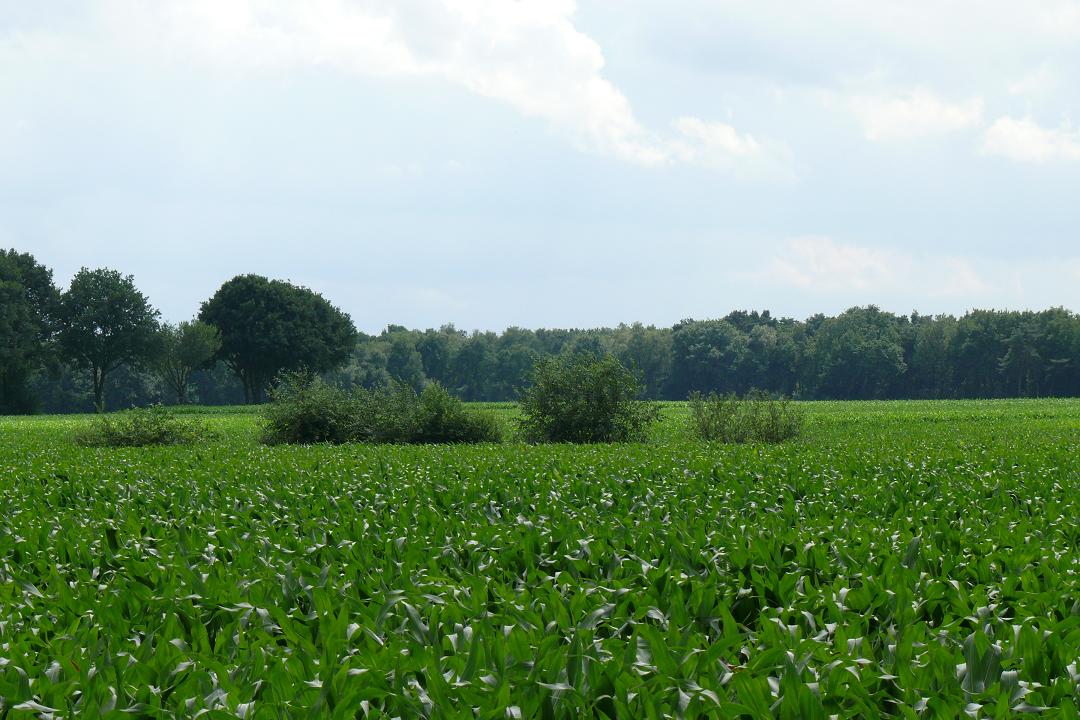
The muscles allow forceful stretching of the backbone from a bent position; the hind legs transfer this power to the ground, basically catapulting the hare forward. The hind legs are also very muscular, with long tendons running towards the feet, giving a spring-like effect that enables jumping with low energy loss.
The muscles of the hind leg are positioned close to the body, keeping the end of the leg very thin and light-weight, which enables rapid limb movement. Most mammals have five hind toes, but European hares have only four, which also reduces weight. Strong and sharp nails ensure grip on slippery soil or in wet vegetation.
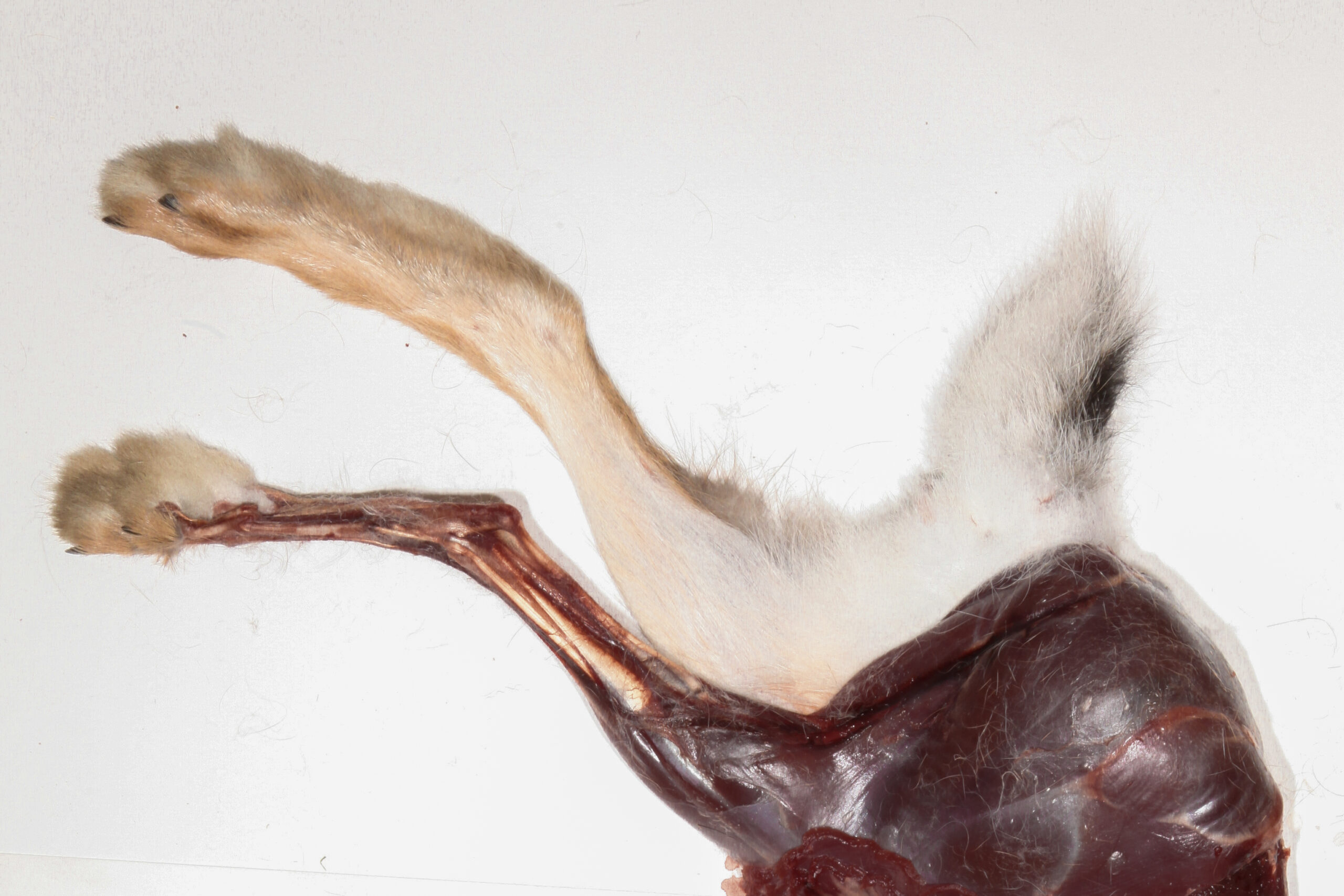
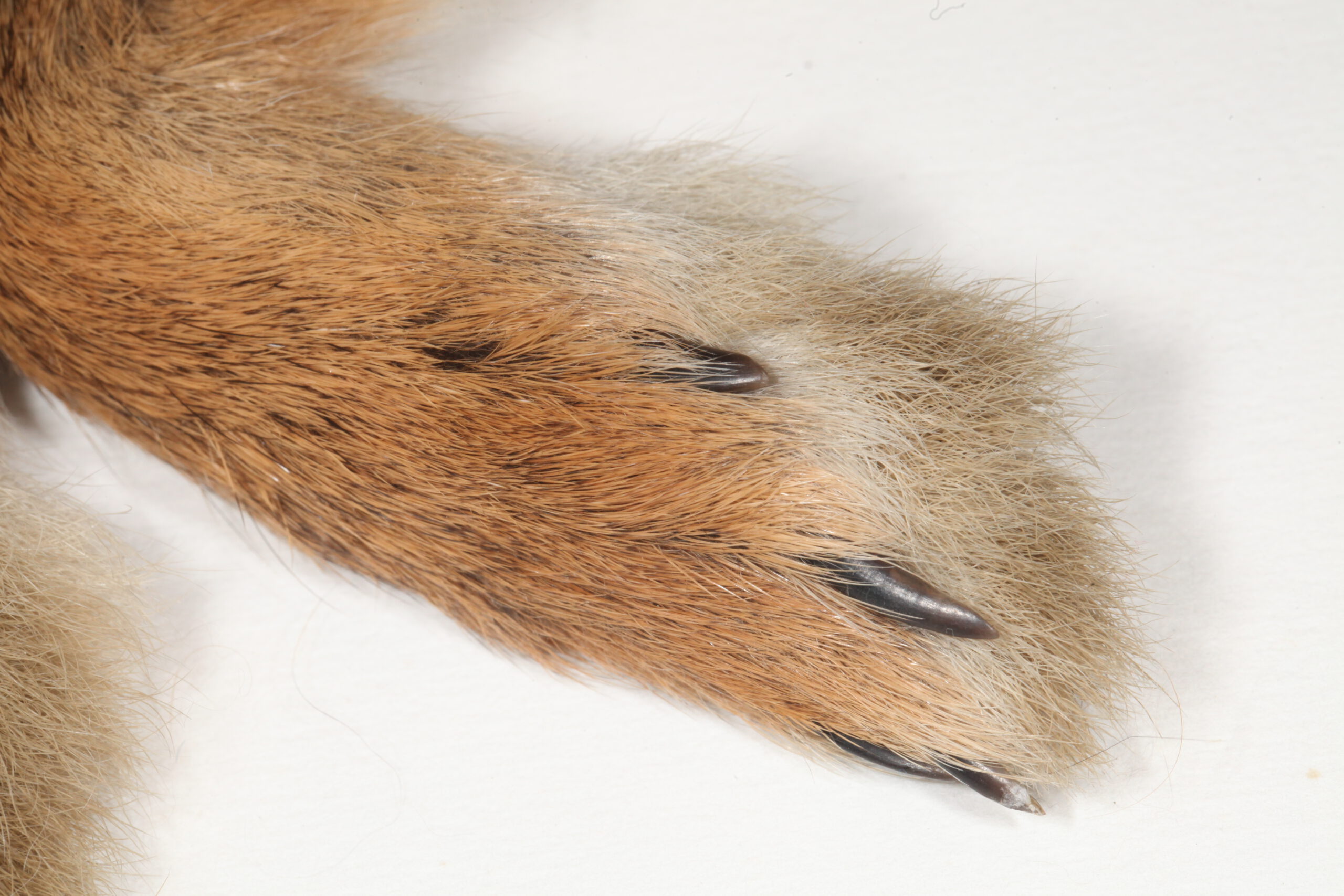
Compared to the robust hind area of the body, the head and front limbs are very small and certainly not designed to deliver the power for high speed actions. Apart from the competitive fighting behaviour, hares mainly use their front legs to land on the ground while at speed.
Their extremely mobile shoulder blade serves as a shock absorber to withstand the impact when landing on the ground. The bone structure itself is thin as to weigh as little as required to support the body while running.
Continue reading
No rodents
Hares are real herbivores and slice off plant parts using their six incisors, making them deviant from rodents, like squirrels or wood mice, which have four incisors (in hares, a third pair of incisors lies behind the larger pair of the upper jaw).
Their stomach is a large, thin-walled pouch with different types of tissue in the inner wall. Some tissues may function to produce acids and digestive enzymes, whereas others serve to expand in order to store food. A hare’s plant-based diet requires an efficient digestion process, as plant material is hard to digest.
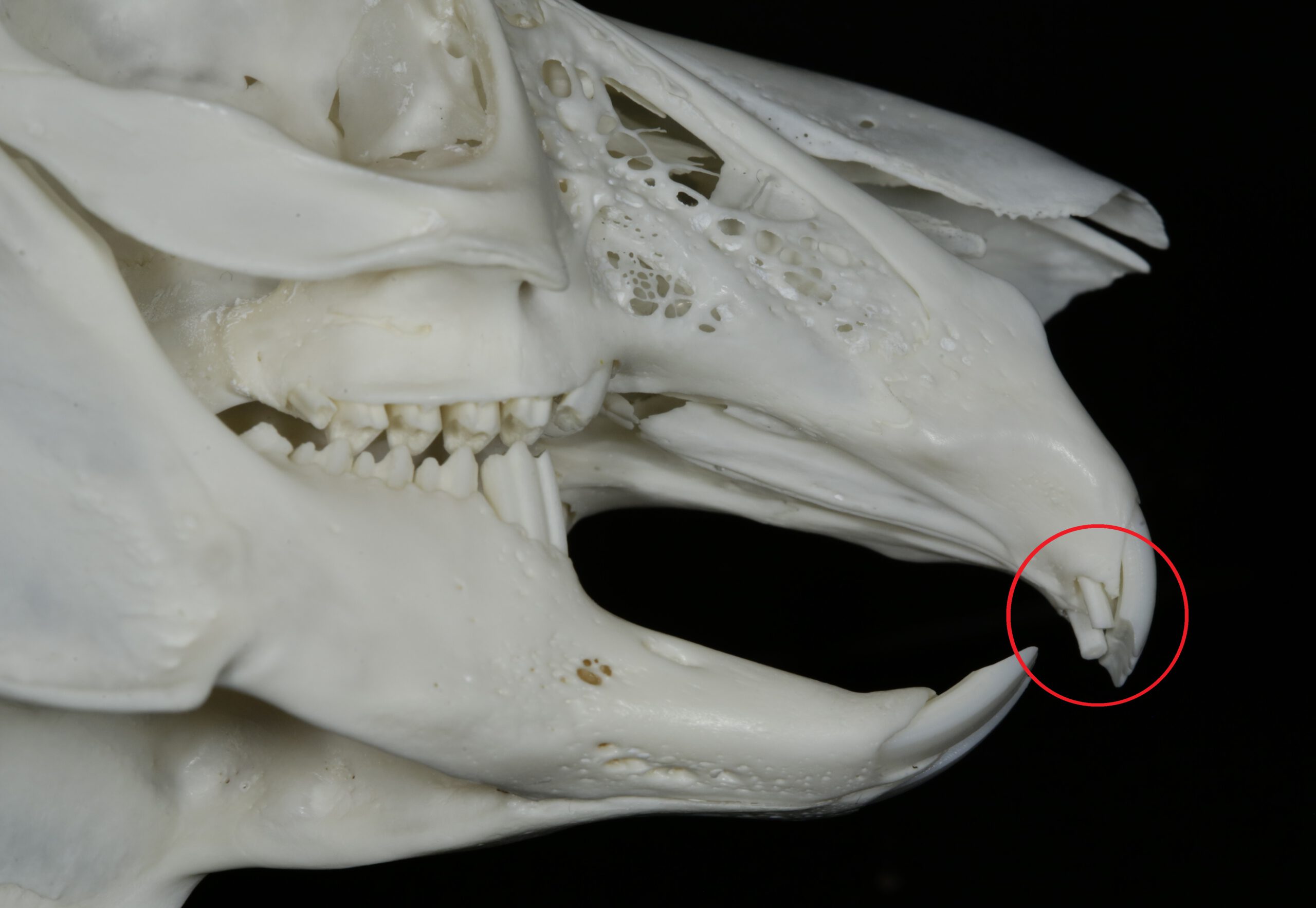
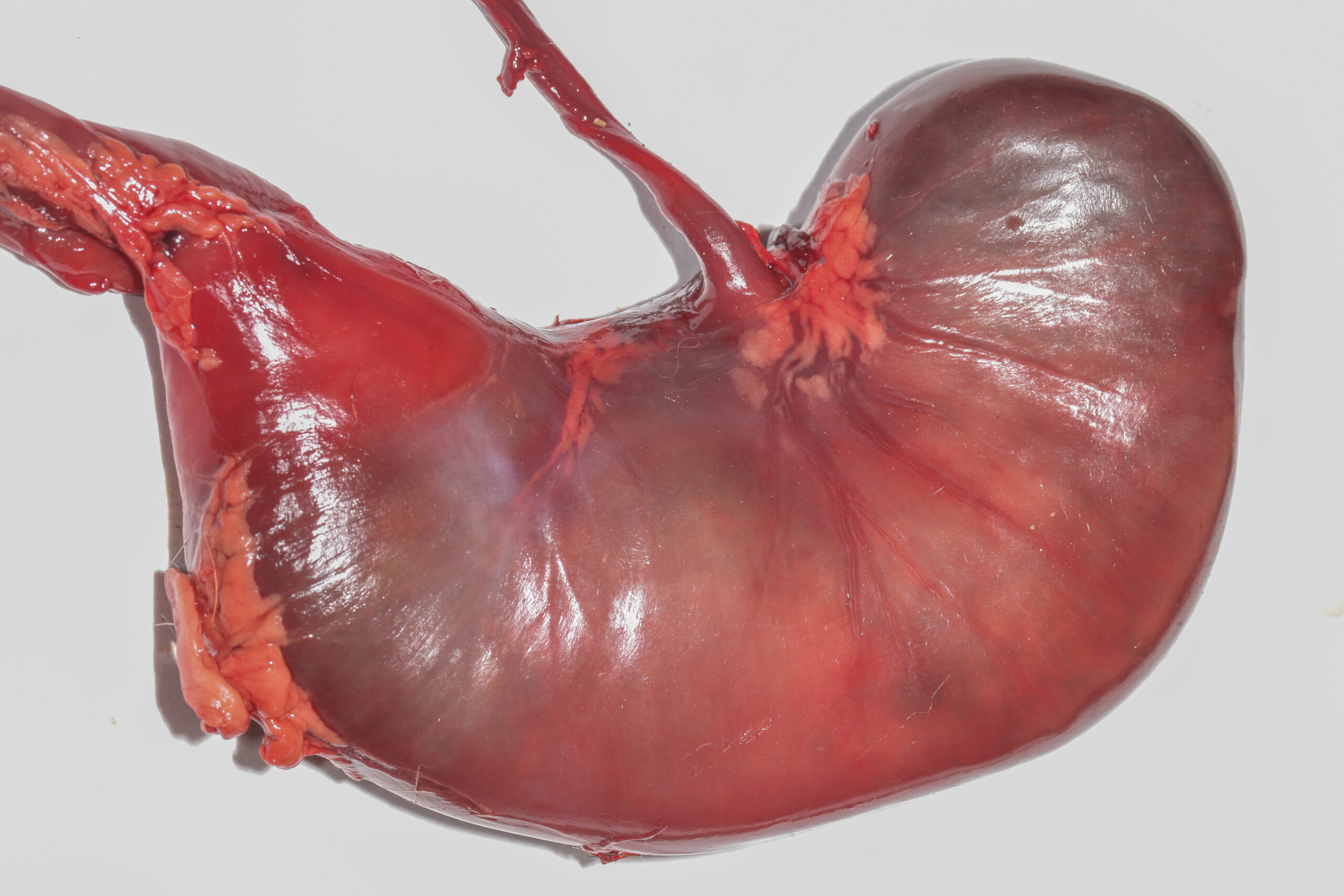
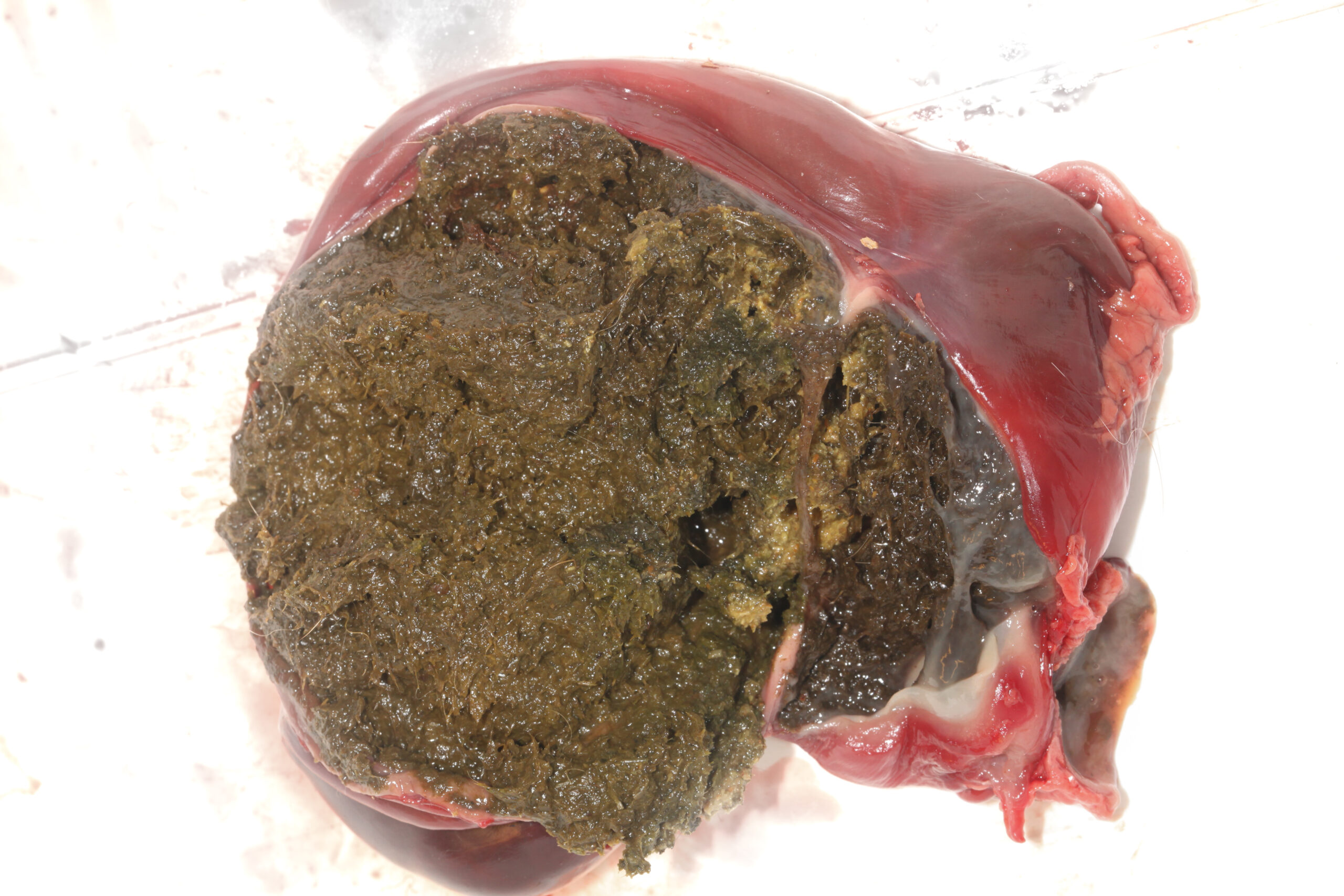
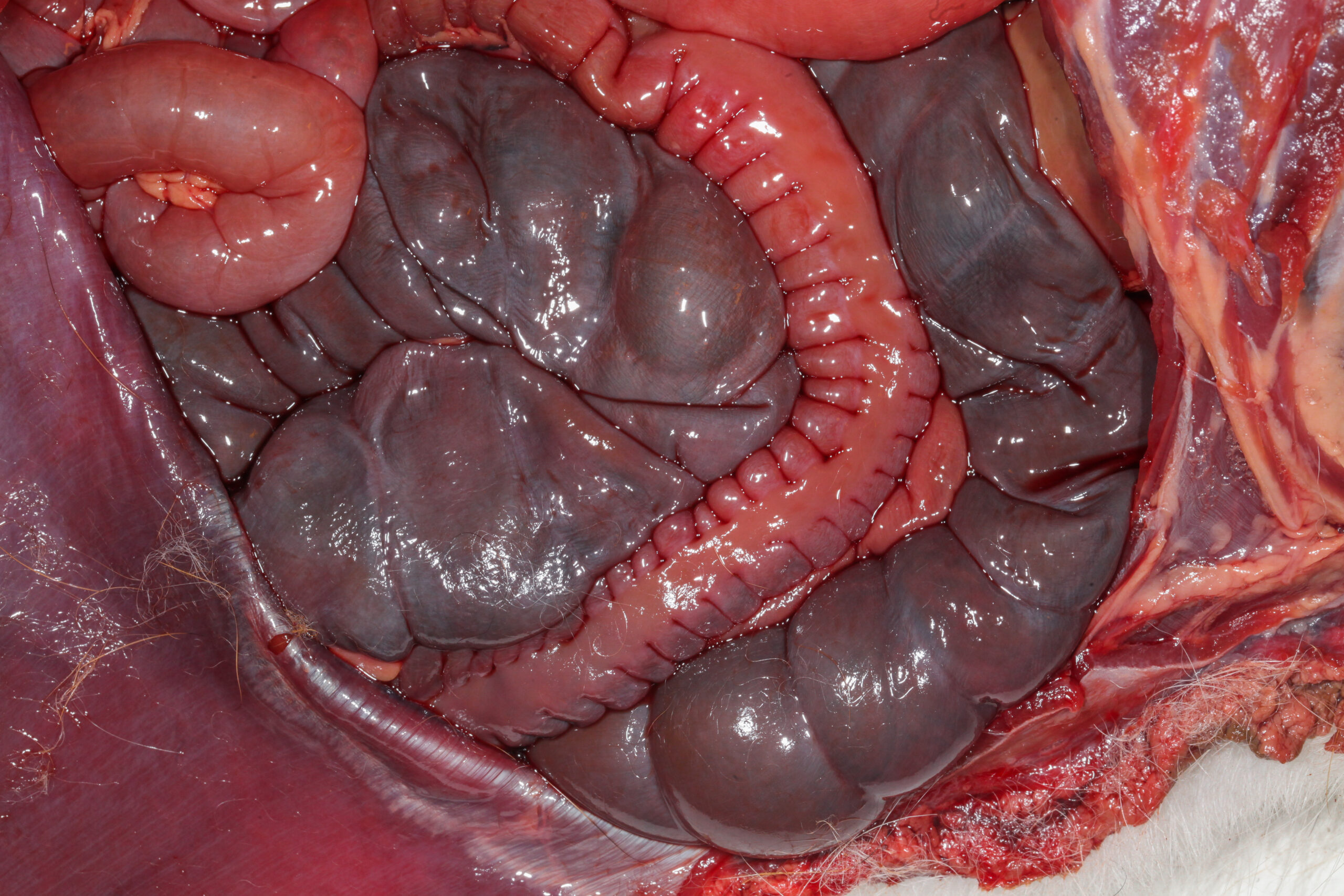
Therefore, the intestine is long and connects to a uniquely shaped blind gut with bulb-shaped pouches, to increase the surface area on which bacteria can efficiently ferment plant material. Fat reserves needed to survive winter are not primarily stored between the intestines, like in many other animals, but against the abdominal and leg muscles. These require energy when fleeing from a predator and can address such nearby fat reserves, keeping the hare alive.
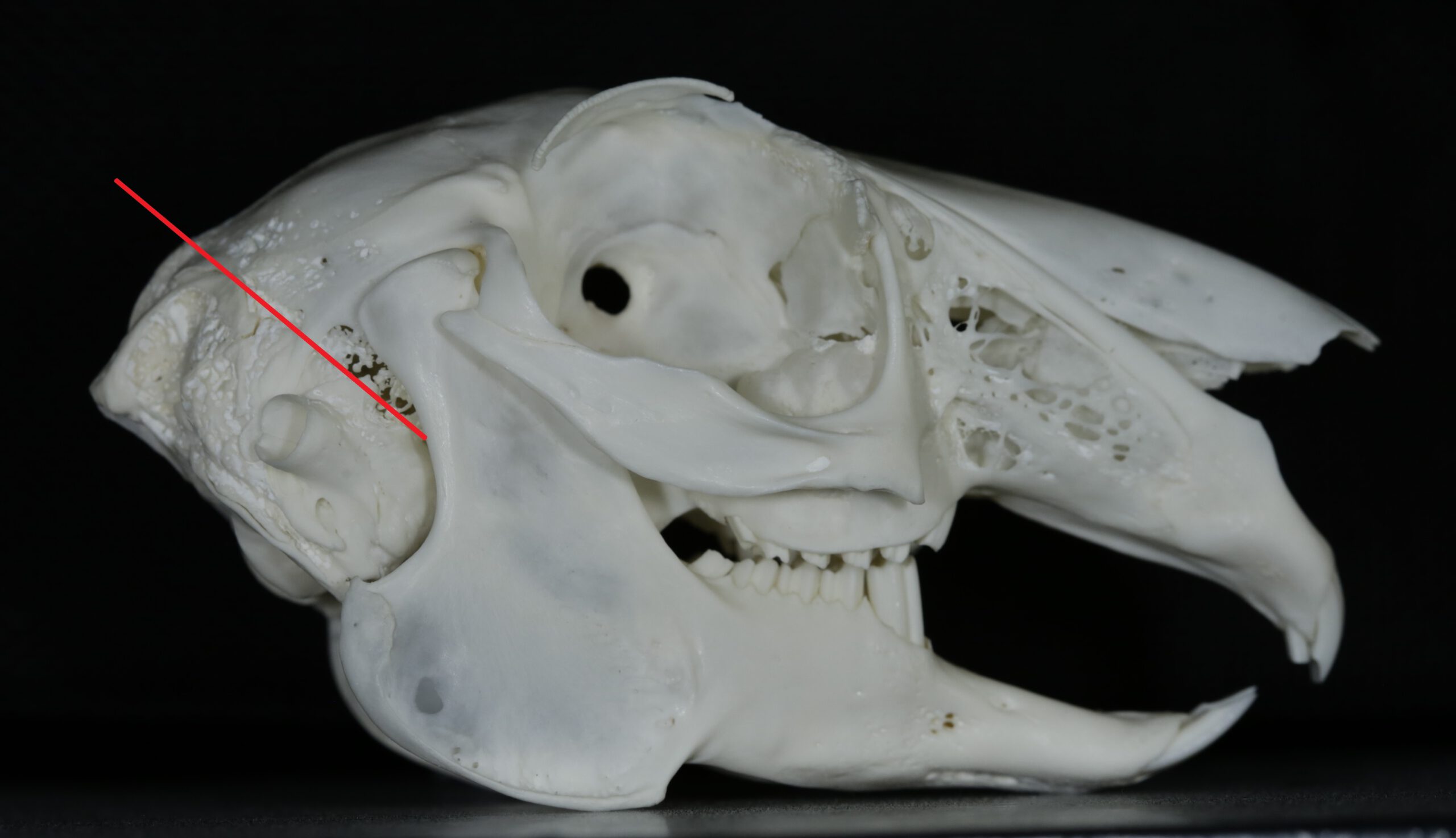
Unique skull
Hares are unique among mammals because of their kinetic skull, which means that some skull bones can move separately from each other (hinge indicated by red line here). The back part of the braincase can hinge relative to the frontal part of the skull, which would absorb the impact upon the brain when landing on the ground with their forelimbs while running. Maintaining an upright position of the ears while running (see slow motion video above) would repeatedly ‘reset’ this skull movement, in order to absorb the strike of the next step and so on. Though, the exact functioning of their kinetic skull remains partially questioned.
Although hares could remind one of rabbits, they differ quite a lot in ecology and behaviour. Hares mainly live individually and do not use burrows, and their young are born fully furred and with eyes open, enabling them to be precocial and to roam around shortly after birth.
